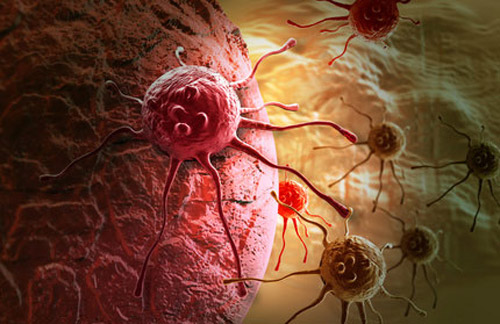
Federally-funded research, including advances in -omics technologies, is driving both development of new treatments and advances in public health, paced by a 26% drop in the cancer death rate, The American Association for Cancer Research (AACR) said in its annual Cancer Progress Report.
However, AACR Cancer Progress Report 2018 also warned that cancer continues to pose challenges for the U.S. that include a rising number of new cases and continuing disparities in progress among population groups. The Association called for continued increases in federal funding of research, as well as drug development, cancer control, cancer registries, and screening and awareness programs.
“Discoveries in the field of cancer genomics are continuing to fuel the development of new molecularly targeted therapeutics, which are transforming the treatment of more and more types of cancer,” the AACR observed.
Genomics is the predominant factor influencing precision medicine in oncology, according to the Association, “but as we learn more about additional factors, we can create a more personalized profile for each patient.
“As we step further into the era of precision medicine, the scope of progress will continue to broaden, providing new hope for many cancer patients who are awaiting more effective treatment options,” the AACR predicted.
The U.S. is already reaping the fruits of advances in cancer research, the Association found. Between Aug. 1, 2017, and July 31, 2018, the FDA approved 22 treatments either for the first time or for new types of cancer—paced by the authorization of Novartis’ Kymriah (tisagenlecleucel) in August 2017, followed two months later by the approval of Yescarta (axicabtagene ciloleucel), marketed by Gilead Sciences’ Kite subsidiary.
Even more encouraging, the AACR said, the U.S. cancer death rate fell 26% for adults from 1991 to 2015—resulting in nearly 2.4 million lives saved. The rate of cigarette smoking among U.S. adults has fallen to 14%, down from 42% in 1965, a year after the U.S. Surgeon General Luther L. Terry, M.D., issued the seminal report that linked smoking to an increase in lung cancer mortality.
“The unprecedented progress we are making against cancer has been made possible largely through basic research,” Elizabeth M. Jaffee, M.D., president of the AACR and deputy director of The Sidney Kimmel Comprehensive Cancer Center at Johns Hopkins University, said in a statement. “A continued increase in federal funding for both basic, translational, and clinical research will allow us to make major headway moving forward.”
To that end, the AACR called for a funding increase of at least $2 billion for the NIH in the 2019 federal fiscal year—a 5.4% increase, to $39.1 billion, that was approved by the U.S. Senate last month, and is expected to be considered by the U.S. House of Representatives. The AACR also recommended:
- Ensuring that $711 million in funding designated through the 21st Century Cures Act for the Cancer Moonshot and other disease-specific initiatives is fully appropriated in FY 2019, in addition to the NIH budget increase.
- Increasing the FDA’s base budget to $3.1 billion, a $308 million increase above FY 2018—including $20 million for the FDA Oncology Center of Excellence.
- Approving at least $517 million in funds for the Centers for Disease Control and Prevention (CDC)’s cancer prevention and control programs, which include comprehensive cancer control, cancer registries, and screening and awareness programs for specific cancers.
The AACR report also highlighted several challenges posed by cancer in the U.S. One is a projected continuing increase in new cancer cases diagnosed annually, according to American Cancer Society figures showing a predicted jump from 1.735 million in 2018 to 2.387 million in 2035. This year, 609,640 Americans are projected to die from cancer.
The report also urged increased efforts to educate adults on the cancer risk posed by obesity and alcohol use, and to eliminate cancer health disparities. Racial and ethnic minorities and poor people are disproportionately exposed to many of the potentially avoidable risk factors, the AACR noted.
The Association also called for greater human papillomavirus (HPV) vaccination of U.S. adolescents, which the AACR said could prevent nearly all cases of cervical cancer, as well as many cases of oral and anal cancer. Less than half of adolescents are up to date with the recommended vaccination series.






![AI Algorithm Could Reduce Breast Cancer Mammogram False Positive Rate The primary goal of the Paradigm Registry is to accelerate tumor profiling based on disease biology. [iStock/LilliDay]](https://www.insideprecisionmedicine.com/wp-content/uploads/2019/01/307-218x150.jpeg)






